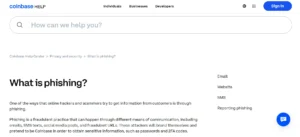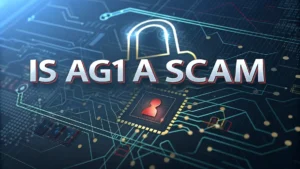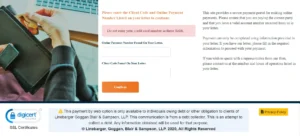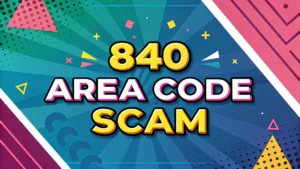UPS delivery scam texts have become one of the most dangerous threats facing consumers today. These fake messages trick people into clicking malicious links that steal personal information and money.
The scammers behind these texts are getting smarter and their messages look more realistic than ever before.
Online shopping has made package deliveries part of our daily lives. This creates the perfect opportunity for criminals to send fake delivery notifications. They know you might be expecting a package, so their scam texts seem believable at first glance.

Key Takeaways
- UPS scam texts target millions of Americans with fake delivery notifications designed to steal personal and financial information through malicious links
- Financial losses from text scams reached $470 million in 2024, representing a 26% increase from the previous year as criminals become more sophisticated
- Legitimate UPS messages never include payment requests or ask for personal information via text, and they only send notifications if you have requested SMS updates for scheduled deliveries
- Red flags include poor grammar, urgent language, suspicious links, and requests for payments that legitimate shipping companies would never make through text messages
- Report scam texts immediately by forwarding them to 7726 (SPAM), emailing screenshots to fraud@ups.com, and filing complaints with the FTC to help protect others
What Are UPS Delivery Scam Texts
UPS delivery scam texts are fake messages that pretend to come from the shipping company. Criminals send these texts to trick people into thinking they have a package problem that needs immediate attention.
These scam messages usually claim there was a failed delivery attempt or that your package is being held for some reason. They create a sense of urgency to make you act quickly without thinking clearly.
The scammers hope you will click on their malicious link or call their fake phone number. Once you do this, they can steal your personal information, install malware on your phone, or trick you into paying fake fees.
Modern UPS scam texts are very convincing. They often include fake tracking numbers and use official looking language. Some even copy the real UPS logo and formatting to make them appear legitimate.
The goal is always the same. Criminals want to steal your money, personal information, or gain access to your accounts. They prey on the fact that many people are expecting packages and might not think twice about a delivery notification.
How UPS Text Scams Actually Work
The process behind UPS text scams follows a predictable pattern that criminals use to maximize their success rate. Understanding this process helps you recognize and avoid these dangerous traps.
Scammers start by sending mass text messages to thousands of phone numbers at once. They do not need to know if you actually have a UPS delivery coming. They send so many messages that some people will naturally be expecting packages.
The fake messages create urgency by claiming your package cannot be delivered. Common excuses include incomplete addresses, missing payments, or failed delivery attempts. This pressure makes people act without carefully checking the message details.
Each scam text contains a malicious link that leads to a fake website designed to look like the real UPS site. These fake sites ask you to enter personal information like your name, address, credit card details, or Social Security number.
Some scam texts ask you to call a phone number instead of clicking a link. When you call, fake customer service representatives will try to extract your personal information over the phone. They sound professional and use official sounding scripts to gain your trust.
The information you provide gets sold to other criminals or used immediately for identity theft and fraud. Your credit card numbers can be used for unauthorized purchases, while your personal details help criminals open new accounts in your name.
Common Types of UPS Scam Messages
UPS scam texts come in several different varieties, but they all share similar warning signs that help you identify them. Learning these common patterns protects you from falling into their traps.
Missed delivery notifications represent the most popular type of UPS scam text. These messages claim the driver attempted to deliver your package but nobody was home. They ask you to click a link to reschedule delivery or provide additional information.
Package hold notifications tell you that your package is being held at a facility due to some problem. The message might claim there are customs fees to pay, incomplete address information, or security concerns that need your immediate attention.
Delivery confirmation requests ask you to confirm details about an upcoming delivery. These scams try to collect your personal information by claiming they need to verify your address, contact details, or delivery preferences before the package can be delivered.
Some scam texts claim there are additional fees required before your package can be delivered. They might mention customs charges, storage fees, or delivery surcharges that need to be paid online immediately.
Prize and survey scams occasionally use fake UPS branding. These messages claim you won a prize from UPS or ask you to complete a survey about your delivery experience. They always end with requests for personal information or small payments.
Red Flags That Identify Fake UPS Texts
Learning to recognize the warning signs of fake UPS texts is your first line of defense against these scams. Real UPS messages have specific characteristics that scammers struggle to replicate perfectly.
Legitimate UPS texts never ask for payment through text messages or links. The company does not collect delivery fees, customs charges, or any other payments through SMS communications. Any text requesting money is automatically a scam.
Grammar and spelling errors are common in scam texts because many originate from overseas criminals. Look for awkward phrasing, misspelled words, or sentences that do not sound like professional business communication.
Suspicious links are major red flags in any text claiming to be from UPS. Real UPS notifications include tracking numbers you can manually enter on their official website. Never click links in unexpected text messages.
Urgent language designed to create panic is another warning sign. Phrases like “immediate action required,” “final notice,” or “package will be returned” are pressure tactics used by scammers to bypass your critical thinking.
The sender information often reveals scam texts. Real UPS messages come from official short codes or clearly identified numbers. Random phone numbers or suspicious sender names indicate fraud attempts.
What Happens When You Fall for These Scams
The consequences of falling for UPS text scams can be severe and long lasting. Understanding these risks helps motivate you to stay vigilant and protect yourself from these dangerous schemes.
Identity theft is the most serious immediate risk when you provide personal information to scammers. They can use your details to open credit accounts, take out loans, file fake tax returns, or commit other crimes in your name.
Financial losses occur when scammers gain access to your bank accounts or credit cards. They can drain your accounts, make unauthorized purchases, or sell your financial information to other criminals on the dark web.
Malware infections happen when you click malicious links on your phone or computer. This software can monitor your activities, steal passwords, capture screenshots, or give criminals remote access to your device.
Your personal information gets sold to other scammers once criminals have it. This means you may face additional scam attempts through phone calls, emails, or mail for months or years after the initial incident.
Credit damage can last for years if scammers open accounts in your name and fail to make payments. You may discover unauthorized accounts on your credit report that take significant time and effort to remove.
How to Verify Legitimate UPS Communications
Knowing how to properly verify UPS communications helps you distinguish between real messages and scam attempts. This process takes only a few minutes but can save you from serious financial and personal harm.
Start by checking the official UPS website directly rather than clicking any links in the text message. Go to ups.com and use their tracking tool to search for any packages associated with your address.
Contact UPS customer service directly using the phone number from their official website. Explain that you received a text message and want to verify if it came from them. They can quickly tell you if the message is legitimate or a scam.
Check your UPS My Choice account if you have one registered. This service shows all packages being delivered to your address, and you can see if there are any real delivery issues that need your attention.
Look for the official UPS communication preferences in your account settings. Real UPS text notifications only come if you have specifically requested SMS updates for tracked packages. If you never signed up for text alerts, any UPS text is automatically suspicious.
Cross reference any tracking numbers mentioned in the text by manually entering them on the official UPS website. Fake tracking numbers will not return any results, while real ones will show detailed package information.
Steps to Take if You Receive a Scam Text
Taking immediate action when you receive a suspected UPS scam text helps protect you and others from these criminal schemes. Following these steps can prevent serious damage to your finances and personal information.
Do not click any links or call any phone numbers mentioned in the suspicious text message. These actions can trigger malware downloads or connect you directly with scammers who will try to steal your information.
Take a screenshot of the scam text for reporting purposes. This evidence helps authorities track these criminal operations and may be useful if you need to file insurance claims or police reports later.
Report the scam text to UPS immediately by emailing a screenshot to fraud@ups.com. The company uses this information to warn other customers and work with law enforcement to stop these operations.
Forward the scam text to 7726 (SPAM) to report it to your mobile carrier. This helps phone companies identify and block similar messages before they reach other customers.
File a complaint with the Federal Trade Commission at reportfraud.ftc.gov. This government agency tracks scam trends and uses the data to prosecute criminals and educate the public about new threats.
How UPS Actually Communicates with Customers
Understanding how UPS really communicates with customers helps you immediately identify fake messages. The company has specific procedures and policies that scammers cannot replicate exactly.
UPS only sends text notifications if you have explicitly requested them through their My Choice service or when creating a shipment. They do not send unsolicited text messages about packages you did not expect or request.
All legitimate UPS text messages come from official short codes or clearly identified phone numbers. The messages include specific tracking numbers that you can verify independently on their website.
Real UPS communications never request payments through text messages, emails, or phone calls. The company does not collect customs fees, storage charges, or delivery fees through these communication methods.
UPS text messages are always brief and professional. They provide basic information like delivery status updates or tracking numbers without using urgent language or pressure tactics to force immediate action.
Customer service communications from UPS always direct you to their official website or provide legitimate contact information. They do not ask you to visit suspicious websites or call unfamiliar phone numbers.
Protecting Your Personal Information Online
Developing strong online security habits protects you from UPS text scams and many other types of fraud. These practices should become automatic parts of your digital routine.
Never provide personal information through text message links or unsolicited phone calls. Legitimate companies have secure methods for collecting sensitive data that do not involve random text messages or cold calls.
Use strong, unique passwords for all your online accounts, especially banking and shopping sites. Password managers can help you create and store complex passwords without having to remember them all.
Enable two factor authentication on important accounts whenever possible. This adds an extra security layer that makes it much harder for criminals to access your accounts even if they steal your password.
Regularly monitor your credit reports and bank statements for unauthorized activity. Early detection of fraud allows you to take action quickly before criminals can cause extensive damage.
Keep your phone and computer software updated with the latest security patches. These updates often fix vulnerabilities that criminals exploit to install malware through malicious links.
What to Do if You Already Clicked a Scam Link
If you accidentally clicked a link in a UPS scam text, taking immediate action can minimize the potential damage. Quick response is critical to protecting your accounts and personal information.
Immediately disconnect your device from the internet to prevent any malware from communicating with criminal servers. Turn off WiFi and cellular data until you can scan your device for threats.
Run a complete antivirus scan on your phone or computer to detect and remove any malware that might have been installed. Use reputable security software and make sure it has the latest virus definitions.
Change all your important passwords immediately, starting with banking and email accounts. Use different devices if possible, since your compromised device might be recording your keystrokes.
Contact your bank and credit card companies to alert them about potential fraud. They can monitor your accounts for suspicious activity and issue new cards if necessary to prevent unauthorized charges.
Monitor your accounts closely for several weeks after the incident. Check bank statements, credit reports, and online accounts regularly for any signs of unauthorized access or fraudulent activity.
Reporting UPS Text Scams to Authorities
Proper reporting of UPS text scams helps law enforcement agencies track these criminal operations and protects other potential victims. Your reports contribute to larger investigations that can shut down scam networks.
Start by reporting directly to UPS through their fraud email address at fraud@ups.com. Include screenshots of the scam text and any other relevant information about when and how you received the message.
File a complaint with the Federal Trade Commission using their online reporting system at reportfraud.ftc.gov. The FTC uses this data to identify trends and coordinate with other agencies to stop scam operations.
Report the scam to your state attorney general’s office through their consumer protection division. Many states have dedicated fraud units that investigate these crimes and can provide additional resources for victims.
Contact your local police department if you suffered financial losses or identity theft as a result of the scam. While they may not investigate individual cases, your report helps establish patterns of criminal activity.
Forward the scam text to 7726 (SPAM) to alert your cellular provider. Phone companies use these reports to identify and block similar messages before they reach other customers.
Frequently Asked Questions
Does UPS send text messages to customers?
UPS only sends text messages if you have specifically requested SMS notifications through their My Choice service or when creating a shipment. They do not send unsolicited texts about unexpected packages.
How can I verify if a UPS text message is real?
Check the official UPS website directly using any tracking numbers mentioned in the text. Real tracking numbers will show detailed package information, while fake ones return no results.
What should I do if I clicked a link in a UPS scam text?
Immediately disconnect from the internet, run antivirus scans, change your passwords, and contact your bank. Monitor your accounts closely for signs of fraud in the following weeks.
Where can I report UPS text message scams?
Email screenshots to fraud@ups.com, forward the text to 7726 (SPAM), and file complaints with the FTC at reportfraud.ftc.gov. Also report to your state attorney general’s office.
Will UPS ever ask for payment through text messages?
No, UPS never requests payments through text messages, emails, or phone calls. Any message asking for money or fees is automatically a scam that should be reported immediately.























